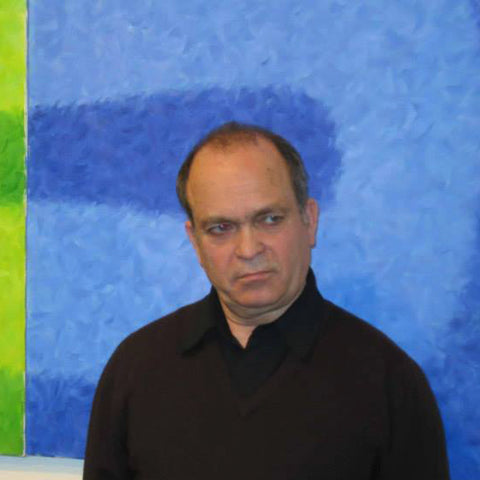
Mihai Ţăruş
View: original artworks
View: fine art prints
View: all
F.B. Profile © Toporaş online art gallery
His artworks are profound. The interpretation of his artistic vision, his thoughts and feelings, is stratified but softly coated. It’s about how the artist feels and what he wants to share with the public.
‘Paintings can’t be consumed like a play or music’, says Mihai Ţăruş. ‘To be understood they need to meet your eyes every day.’
The artist doesn’t depict just a condition, but instead uses different kind of shapes, colours and textures to compress time so that we can decode it according to our own moods and feelings.
‘The dynamic in a painting relates to time’, Ţăruş says, ‘as if it were a dis-integration of something.’
Dis-integration, the artist believes, is a condition that helps him gain a better understanding of the possibilities of a plastic image and depict its temporary or extemporaneous aspects.
Ţăruş takes great interest in presenting time in a non-traditional perspective, one that brings space towards us and gives us the formula of depth. This is a concept that helps him concentrate on something specific each time he paints.
Everything the artist does is meant to express his understanding of reality.
Ţăruş agrees with his teacher, Vladimir Sterligov (1904-1973), who has been called the last Russian avant garde artist. Art is an expression of those who persist, because each time everything is done from the beginning. Each time, each person, each generation comes with its own sensibility and because of this you can’t say that this or that was already done. You do it differently, according to your time.
Critics say that Ţăruş speaks a distinctive and artistic language comprised of numerous findings of modern and contemporary art that are far wider than those of Russian suprematism, in the light of which his artistic personality was formed.
The Moldovan artist studied individually in Sterligov’s workshop between 1971 and 1973 while he was a student at the Academy of Plastic Arts in Saint-Petersburg.
Becoming a follower of non-traditional artists, he graduated the Academy with double effort – trying to be good at both realism and impressionism. He found the obligatory realism boring and had to hide the artworks he had created with a non-conformist approach under his bed and in other places out of sight of his teachers.
His preference is still dominated by the ‘cup-dome’ system, the spun spherical space, ambient geometry of Sterligov; the brightening of the palette, the chromatic amplification of impressionism; the geometrization of Cézanne; the non-objectivity of cubism; the distribution of weight in the imponderable system, the state of stress, suprematism of Malevich; the theory of the rectangular analysis of colour of Matyushin.
According to Ţăruş, the plastic principles are the premises of a creative process that should always overlay the artist’s technical knowledge: A painter can achieve something he wants only if he manages to organise his internal structure.













